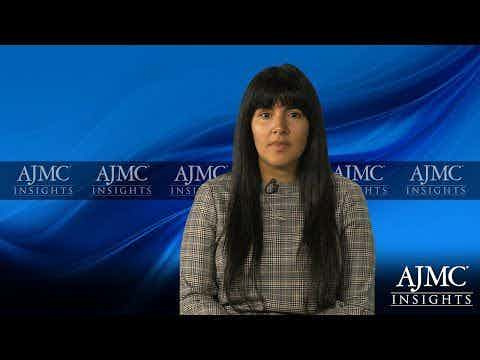Video
Advanced Fibrosis Due to NASH
Norman Sussman, MD, defines nonalcoholic steatohepatitis and advanced fibrosis and comments on the role of early detection to prevent more serious complications such as cirrhosis.
Transcript
Norman Sussman, MD: NASH is an abbreviation for nonalcoholic steatohepatitis. That means there’s fat in the liver, and inflammation. The steato means fat, and hepatitis means inflammation in the liver. It is a situation in which people get fatty liver without alcohol. Alcohol could also cause fat with inflammation. So we distinguish between alcoholic steatohepatitis and nonalcoholic steatohepatitis.
We grade fibrosis on a numeric scale, either from 0 to 4 or 0 to 6. People have personal preferences. It’s all liver disease, irrespective of how you injure your liver, and that leads to healing with scar formation. We grade the scar from none to mild, moderate, or severe. Severe is usually categorized as stage III to IV.
We think there are about 4 million people in the United States with NASH and about 10%—so about 400,000 people—with NASH cirrhosis. It’s sometimes very difficult to tell the difference. We might have late fibrosis that is not yet cirrhosis. That transition from stage III to IV can be difficult to determine.
People don’t usually have symptoms when they have advanced fibrosis. They really develop symptoms once they develop cirrhosis. And by the time people develop symptoms, they’re very far into the disease. We call that decompensation, and it may be impossible for a patient to know they have advanced fibrosis until they start developing complications of cirrhosis. When should they be screened? We recommend early screening based on risk factors rather than waiting for events that tell someone they have cirrhosis.
What patients should we screen for advanced fibrosis? We base it on risk factors. The risk factors come down to the patient’s medical condition and genetics. Both of them play something of a role.
A patient who comes from a family with a history of having liver disease would be 1. And then people who meet the risk-factor guidelines—they have the combination of obesity and diabetes or high blood sugar, high blood pressure, and abnormal lipids—are people who are at risk for fatty liver disease. Those people should be screened.
Early detection is very important because you want to be able to intervene while the patient could change their lifestyle and disease state and prevent progression to end-stage liver disease, when we have very limited options.



